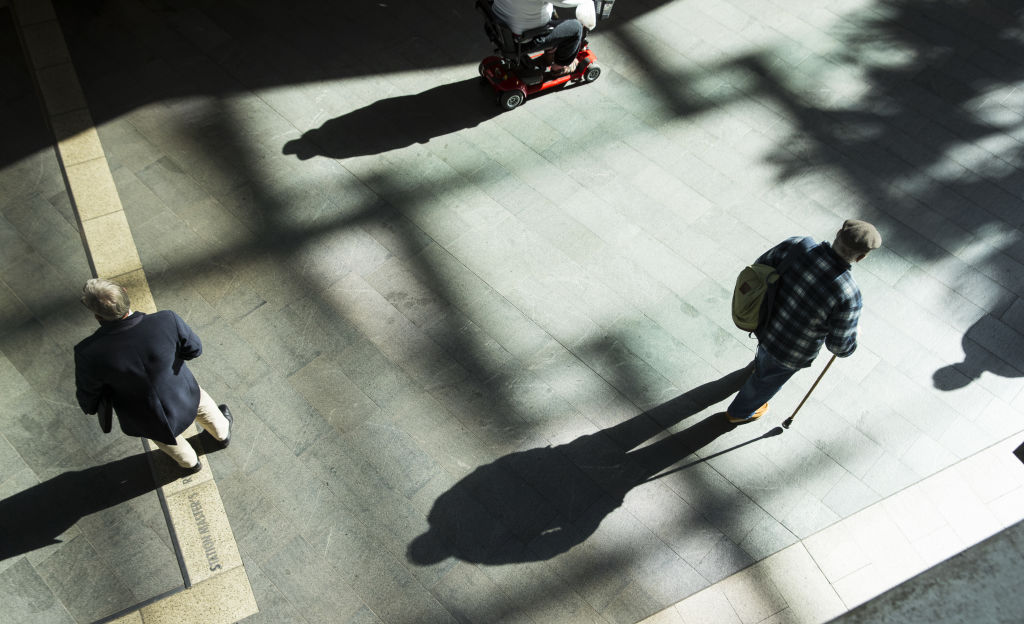Who are the vulnerable people in your neighbourhood?

As our worlds contract inwards, I can’t help but think in an outward direction. Not just to family and friends but those in my neighbourhood who might be struggling in this time of crisis.
I think about across-the-road neighbours who are aged in their 90s. A local friend who lives alone and is starting treatment for cancer. Another neighbour who lives in a dodgy rental arrangement as she will otherwise likely be homeless.
The elderly, disabled and those living alone or homeless are some groups identified in this interactive region-by-region chart about who are more vulnerable in times of emergency. The groups were identified from census data by .id The Population Experts before COVID-19 but their groupings are certainly apt in these troubled times.
Other groups identified are those with lower English language proficiency, those without a car, and those with no internet connection at home.
What can we do to help all these differently vulnerable people? Answering this question can be challenging, especially when guidelines change day by day and we are all consumed with how to manage our own work and lives.
Many solutions are big-picture ones, being taken care of by governments and social organisations. Australia’s peak body for the community sector, Australian Council of Social Services (ACOSS), has applauded decisions to increase Newstart payments, introduce JobKeeper payments and support childcare.
“This will come as a huge relief to so many,” says chief executive Dr Cassandra Goldie, who is also calling for measures to be extended to other vulnerable groups, including those who have never enjoyed income security, such as temporary migrants, asylum seekers and short-term casual workers.
As individuals, it is important to not get overwhelmed with the scope of the COVID-19 impact on our society. One person cannot solve big scale problems but there are things you can do within your means and capacity to make a difference.
“Maintain social connection in safe ways,” is the key message from Australian Red Cross resilience adviser John Richardson.
Reach out in safe ways. If you already have neighbours’ phone numbers, give them a call. If not, visit now while you still can – stand well back from the front door and have a short conversation to pass on your contact details and gauge their needs (and communicate yours). Or, leave a note or a card, like these ones created by Relationships Australia. “Above all, stay home,” says Richardson. “We also strongly recommend people drop off a card to their neighbours, offering to lend a hand if they’re unable to get out.”
Be respectful of privacy but ask questions. There is no point in tip-toeing around a person’s vulnerabilities if it leaves them without support. Ask whether they are managing and what help would be appreciated, offering specific suggestions as needed.
Offer help in navigating safe systems before offering direct help. Advising an elderly neighbour on accessing supermarket home-delivery is a better option than taking on all their shopping, because if you become unwell or restrictions get tighter, they will be back to square one.
Donate money if you are able to. Check online before calling. Many services are overwhelmed at present so be self-sufficient in helping out if possible. Consider even small acts of kindness, like pay-it-forward coffees from cafes already offering this.
Consider your own needs and don’t over-promise. Like putting on your own oxygen mask before assisting others, you’ll be much more able to provide support if you are doing OK.
Respect different approaches to the crisis. In my neighbourhood, some have not left the house in weeks and others are going out for exercise or shopping as needed. Unless someone is doing something overtly dangerous or rule-flouting, allow people to manage in their own way.
Work out which trends to follow and which to ignore. McCrindle Research shows that only 6 per cent of Australians initially indulged in panic buying but another 30 per cent of us took fright as a result and followed suit.
Link people to services providing what they might need. Like SBS’s brand new online portal with COVID-19 information in 63 languages, or schools that are loaning out laptops for students who are on the wrong side of the digital divide.
For my part, I am texting and ringing friends much more often than usual. I am taking my friend to medical appointments, feeling odd wearing gloves and asking her to sit in the back seat but knowing this is for the best.
I am not proud of the fact that it has taken this pandemic to properly meet my elderly neighbours. Four years of assuming I’d “get around to it one day” was fixed in an hour by leaving them a note with my number and then having a good old chin-wag on the phone.
It turns out their family are all elsewhere and their friends are people of similar age and vulnerability. Their gratitude in having been contacted was truly touching.
In less positive news, my other neighbour let me know that she has moved out and is now homeless. She hasn’t responded about whether she is still nearby and whether I can help in any way. I’ve let her know that while I can’t offer her a room, I would like to give her some money and hear what else she might need.
As our worlds turn inwards, we need to remember that “social distancing” is really “physical distancing”. We need – in safe ways – to stay socially connected more now than ever.
For other tips, see the COVID-19 section of the Australian Red Cross website: redcross.org.au/stories/covid-19.
Vivienne Pearson is a freelance writer.
States
Capital Cities
Capital Cities - Rentals
Popular Areas
Allhomes
More







